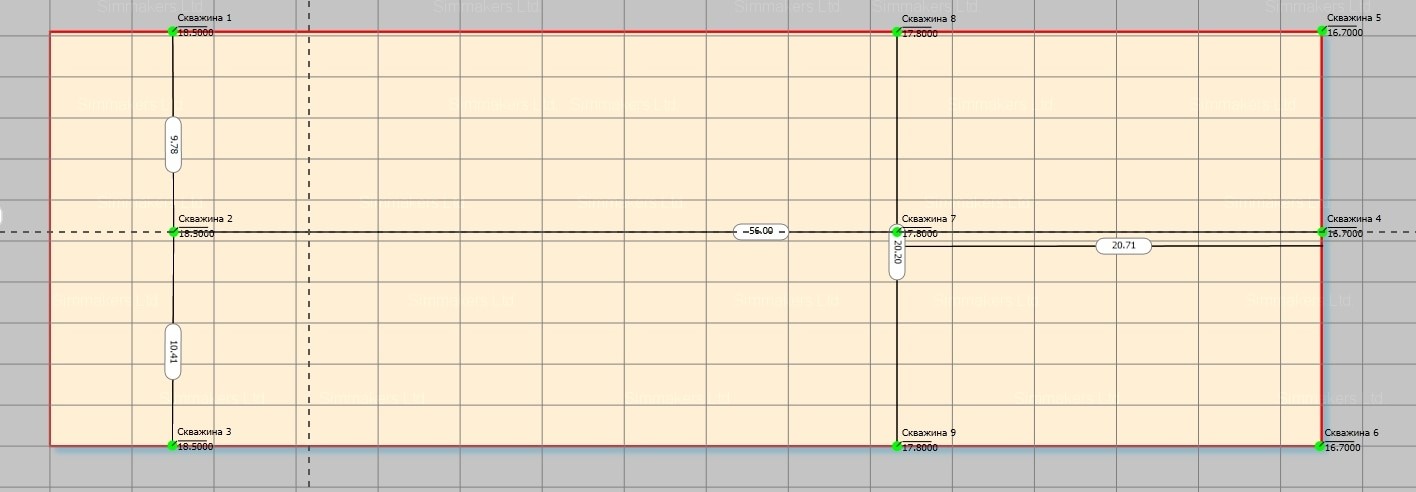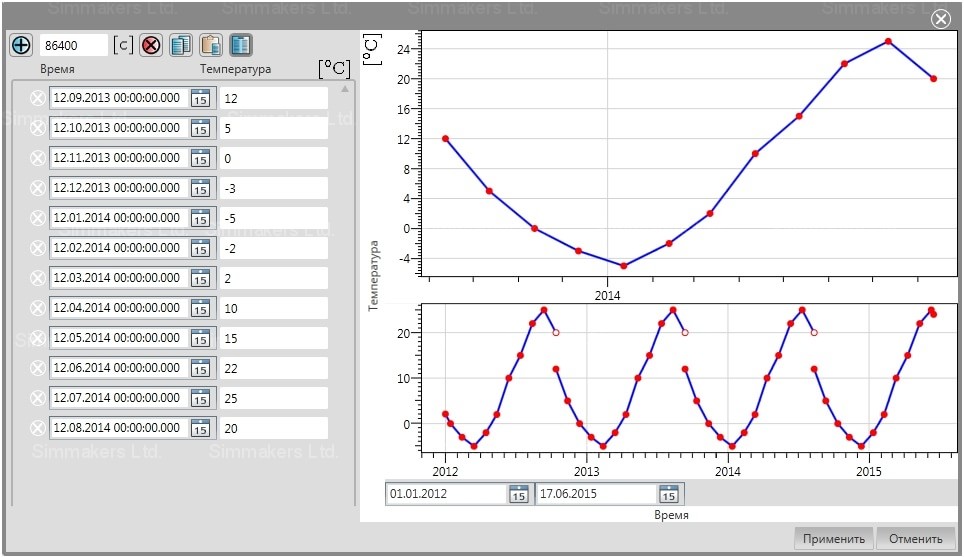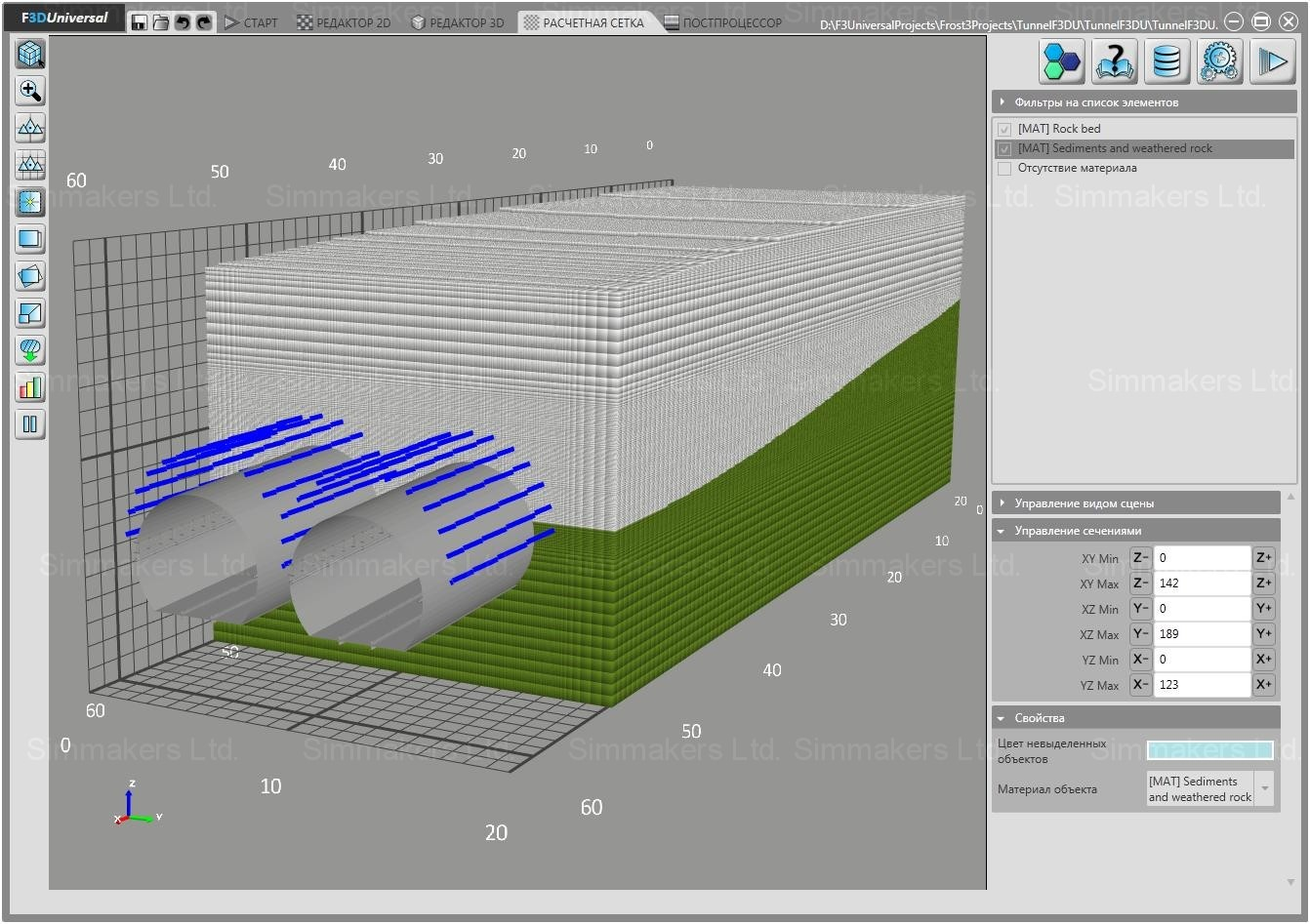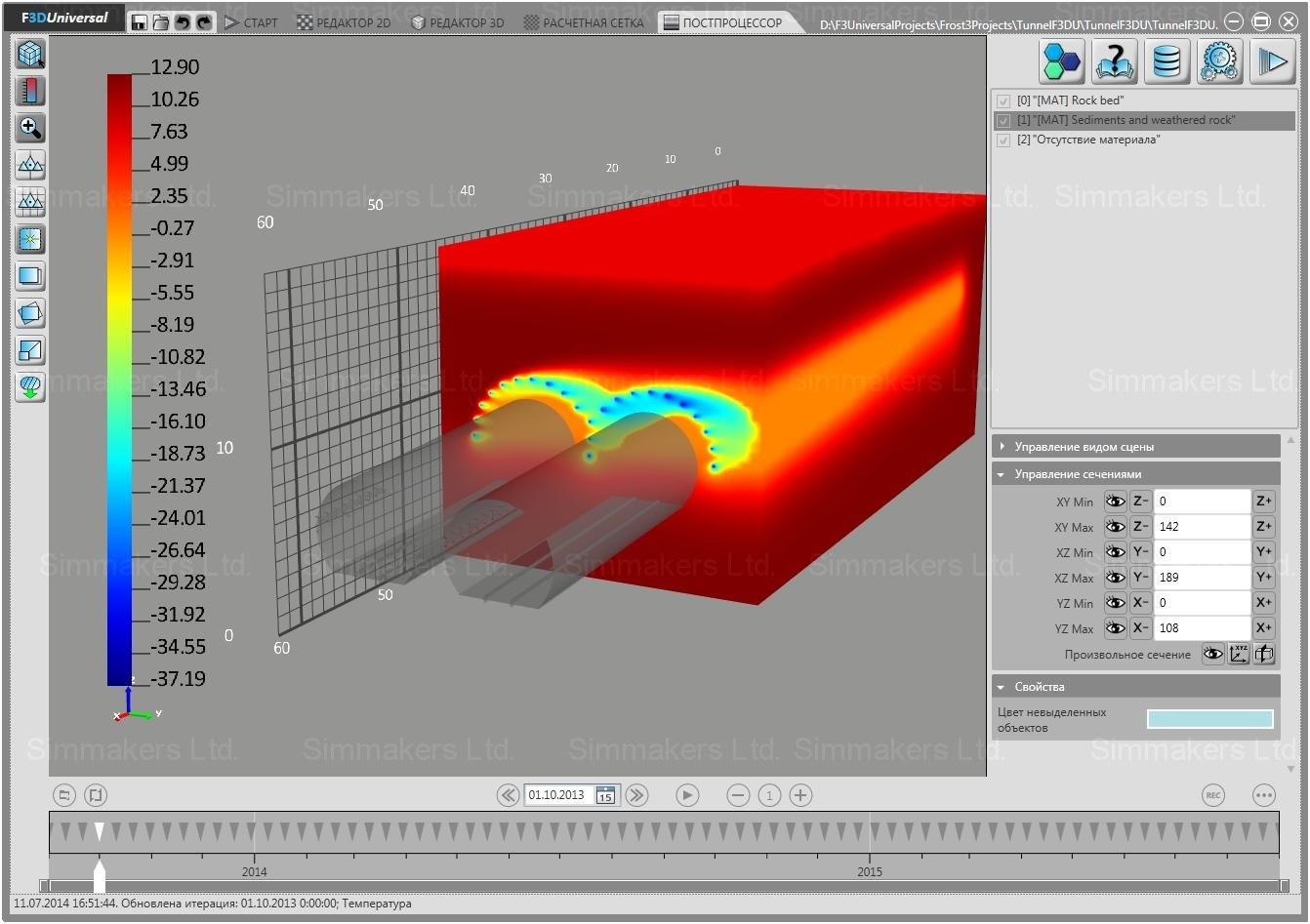In Germany, during the construction of a new intersection between the regional carrier, Deutsche Bahn, and a city underground railway line, a new railway section with a total length of 1.3 kilometers was required. A specific feature of this section is that its path crosses a large complex of buildings protected by law and it was therefore decided to construct a tunnel at this section. However, this task was seriously complicated by high groundwater flow rates in one segment of this section. As a result of the high filtration rate during tunnel drilling in this segment, there is a distinct probability that the earth under the foundations will be subject to settling. This situation may compromise any structures built on top of this underlying area, which is of course, unacceptable.
As a solution to this nonstandard problem, an artificial ice shield over the drilling area was proposed. This measure allows the strengthening of the ground and securing the foundations while performing construction of the tunnel. The tunnel consists of two paths, each of which requiring separate drilling operation. The image below shows a vertical section of the ground in the tunnel drilling area.

The blue color shows the area to be frozen. Verwitterungshorizont – weathered rock in sediments layer. Keupergestein – rock bed. GW – top ground surface.
In order to justify the application of the proposed design solutions, it was necessary to perform computer simulation of artificial ground freezing in the tunnel construction area using Frost 3D.
When building a computer model, the following geometrical dimensions of the computational domain were set: length – 62 meters, width – 20.2 meters, height – 18.4 meters.
The magnitudes of the computational domain were chosen on the basis of the geometric dimensions of the tunnel and cooling devices and the geological and lithological structure of the ground. The influence of the boundaries on the thermal processes inside computational domain was also factored in.
Ground layers in the area under consideration have a complex structure. A geotechnical survey was carried out and the following table with borehole heights was obtained.
| Borehole No. | Mouth elevation, [m] | Sediments and weathered rock layer, capacity [m] | Rock bed layer, capacity [m] |
| 1 | 18.4 | 7.3 | 11.2 |
| 2 | 18.4 | 5.7 | 12.8 |
| 3 | 18.4 | 4.3 | 14.1 |
| 4 | 16.7 | 9.3 | 7.4 |
| 5 | 16.7 | 9.3 | 7.4 |
| 6 | 16.7 | 9.3 | 7.4 |
| 7 | 17.8 | 10 | 7.8 |
| 8 | 17.8 | 10 | 7.8 |
| 9 | 17.8 | 10 | 7.8 |
The plan of wells is shown in the following image:
Geostatistical tools were used to create a three-dimensional reconstruction of the ground within the computational domain, as shown in the image below. This also shows the area of tunnel paths and cooling units to be laid.
23 cooling units with a total length of more than 1,200 meters were proposed for ground freezing and the creation of an ice shield. The diameter of each pipe is 3.5 inches. The cooling performance is 465 kW, which allows the temperature of -40oC. A 30% calcium solution was selected as the freezing agent.
Collocation of the in-ground cooling units is presented in the section diagram below.

The drilling of pipe-holes is executed at a slight angle. A summary table of the initial and final depths of the in-ground cooling units to be laid is presented below.
| Cooling unit No. | Altitude at the beginning of the freezing area, meters | Altitude at the end of the freezing area, meters |
| 1 | 7.09 | 8.80 |
| 2 | 8.06 | 9.77 |
| 3 | 8.95 | 10.66 |
| 4 | 9.73 | 11.44 |
| 5 | 10.29 | 12.00 |
| 6 | 10.67 | 12.38 |
| 7 | 10.8 | 12.51 |
| 8 | 10.64 | 12.35 |
| 9 | 10.18 | 11.90 |
| 10 | 9.45 | 11.16 |
| 11 | 8.71 | 10.42 |
| 12 | 7.70 | 9.41 |
| 13 | 6.72 | 8.43 |
| 14 | 9.47 | 11.18 |
| 15 | 10.18 | 11.90 |
| 16 | 10.62 | 12.33 |
| 17 | 10.78 | 12.50 |
| 18 | 10.66 | 12.37 |
| 19 | 10.26 | 11.97 |
| 20 | 9.68 | 11.39 |
| 21 | 8.90 | 10.60 |
| 22 | 8.00 | 9.70 |
| 23 | 7.02 | 8.73 |
Water filtration velocity in sand layer comprises 1.25 meters per day; the groundwater temperature is +12.9oC.
Ground characteristics are shown in the table below.
| Ground layer | Ρdry, [kg/m3] | kf, [m/s] | λ2, [W/m*K] | λ1, [W/m*K] | C2, [MJ/m3*К] | C1, [MJ/m3*К] | α, [%] | β, [-] |
| Sediments and weathered rock | 1700 | 10-4 | 2.20 | 3.40 | 2.78 | 2.03 | 1.5 | -0.7 |
| Rock bed | 2000 | 10-14 | 2.00 | 2.16 | 2.40 | 1.95 | — | — |
Ρdry – ground density; kf – filtration coefficient; λ2,1 – thermal conductivity in the thawed and frozen ground; C2,1 — heat capacity of thawed and frozen ground; α, β – coefficients that describe the content of unfrozen moisture.
The First-type boundary condition is set on the surface of the computational domain as a dependence of temperature change over time, shown in the diagram below.
The second-type boundary condition in the form of heat flow equal to zero is set on the side boundary of the computational domain. The first-type boundary condition representing a constant temperature of +12.9 oC is set on the lower boundary.
As a result of computational domain discretization, we obtain a computational mesh consisting of 2,037,312 nodes.
Computational mesh consisting of 2 million cells after tunnel site discretization
Cross section of the middle of the computational domain on the 30th day of operation of the cooling devices
The simulation results of the performance of the cooling devices showed that on the 120th day, the ice shield over both paths was fully formed. Moreover, the first path was almost completely frozen by this time. This can be clearly seen in the image representing the computation results below.
Simulation results on the 120th day of operation of the cooling devices
Isolines of the YZ plane section on the 120th day of computation










